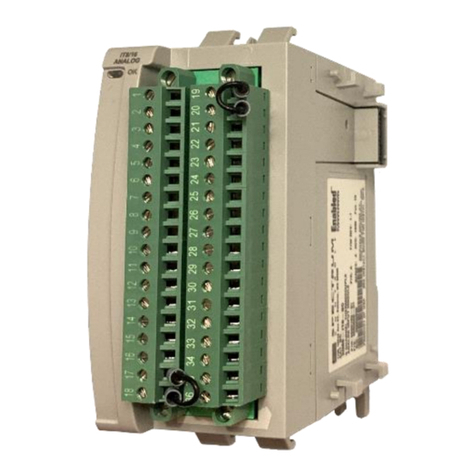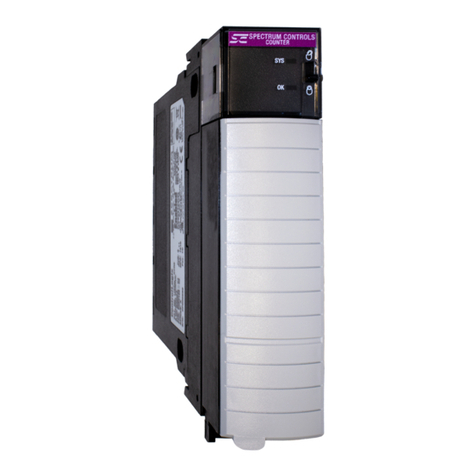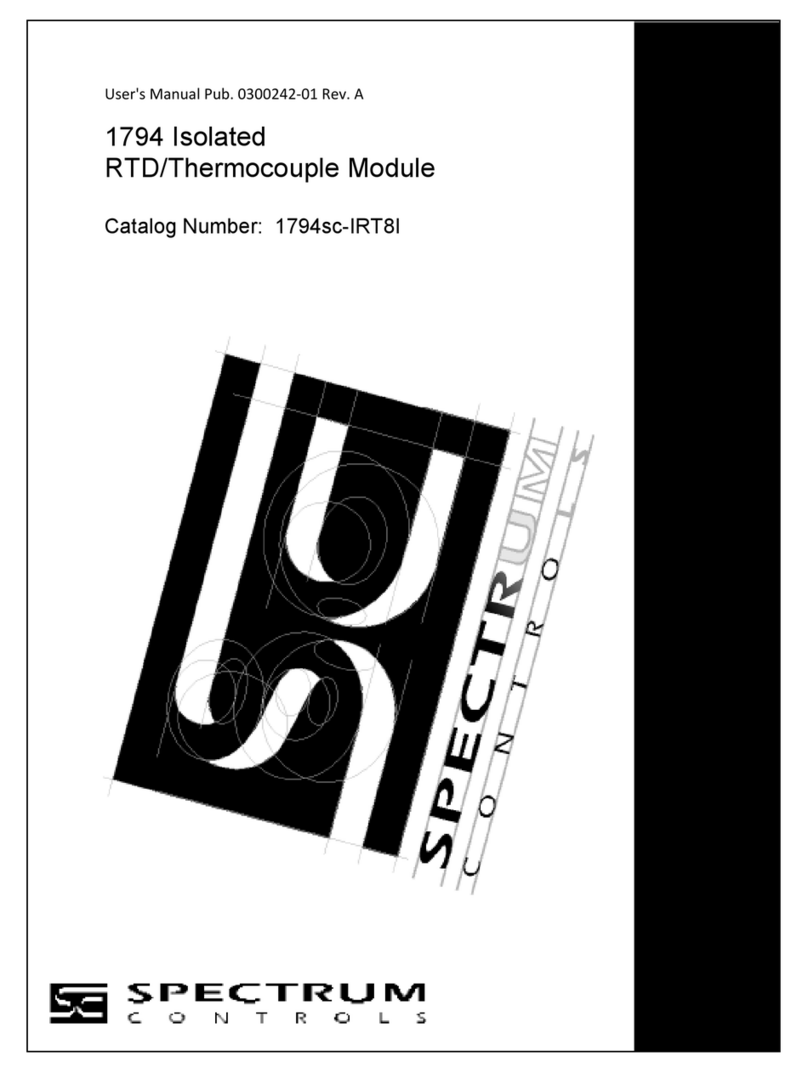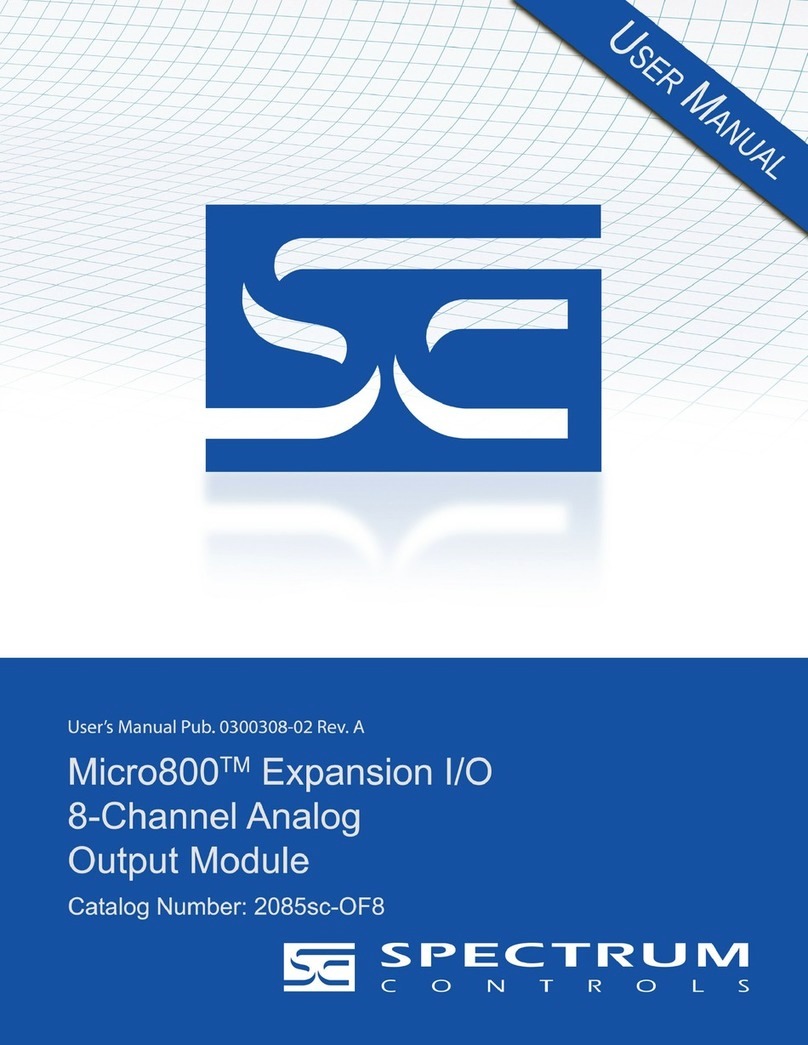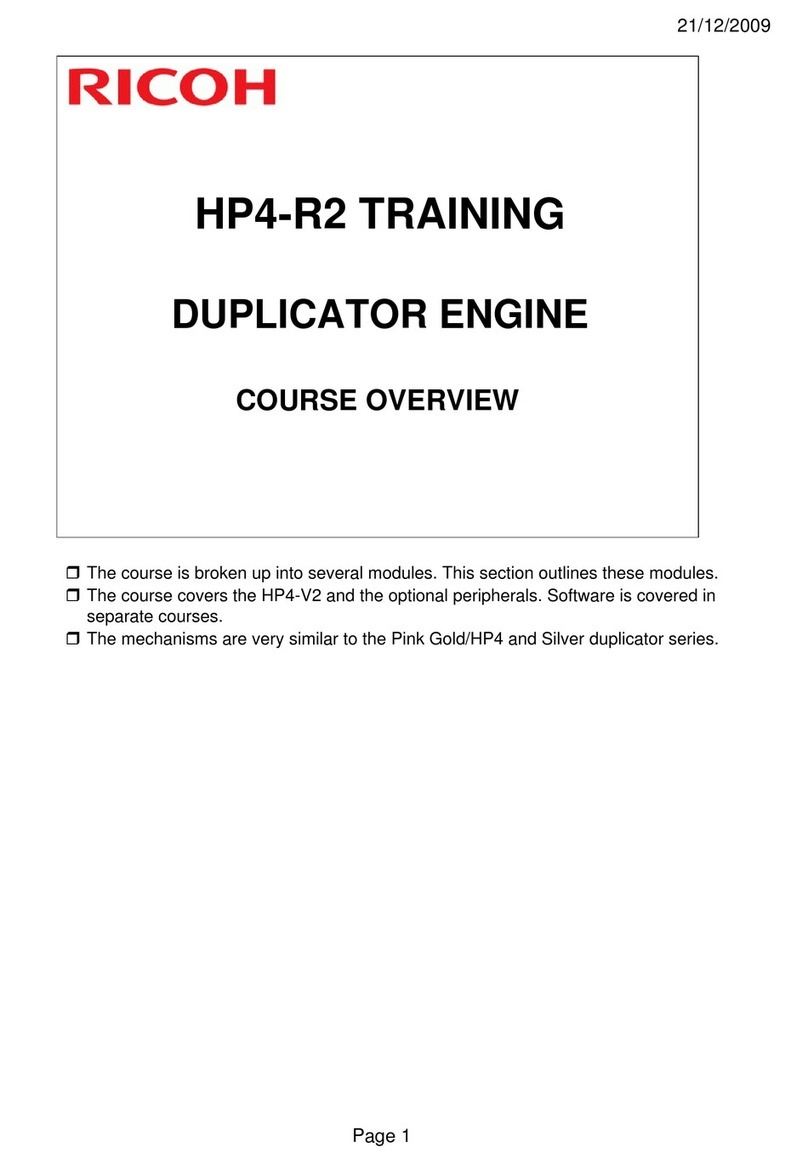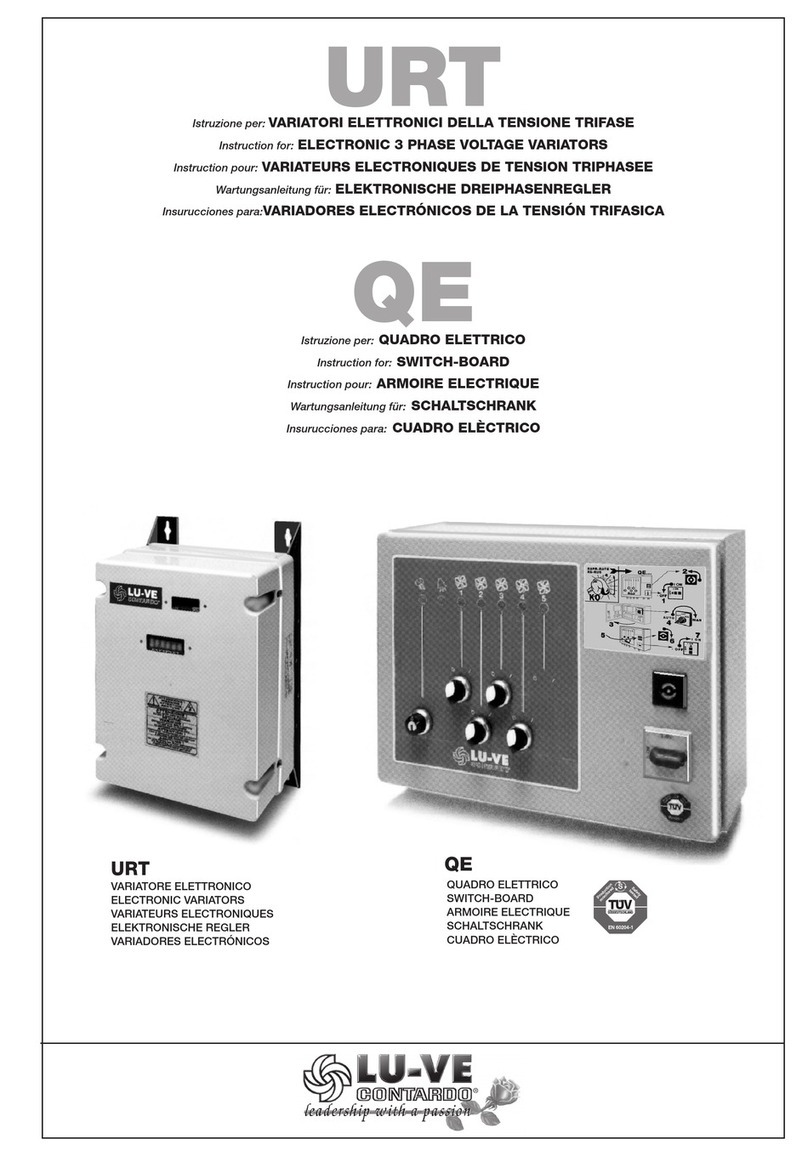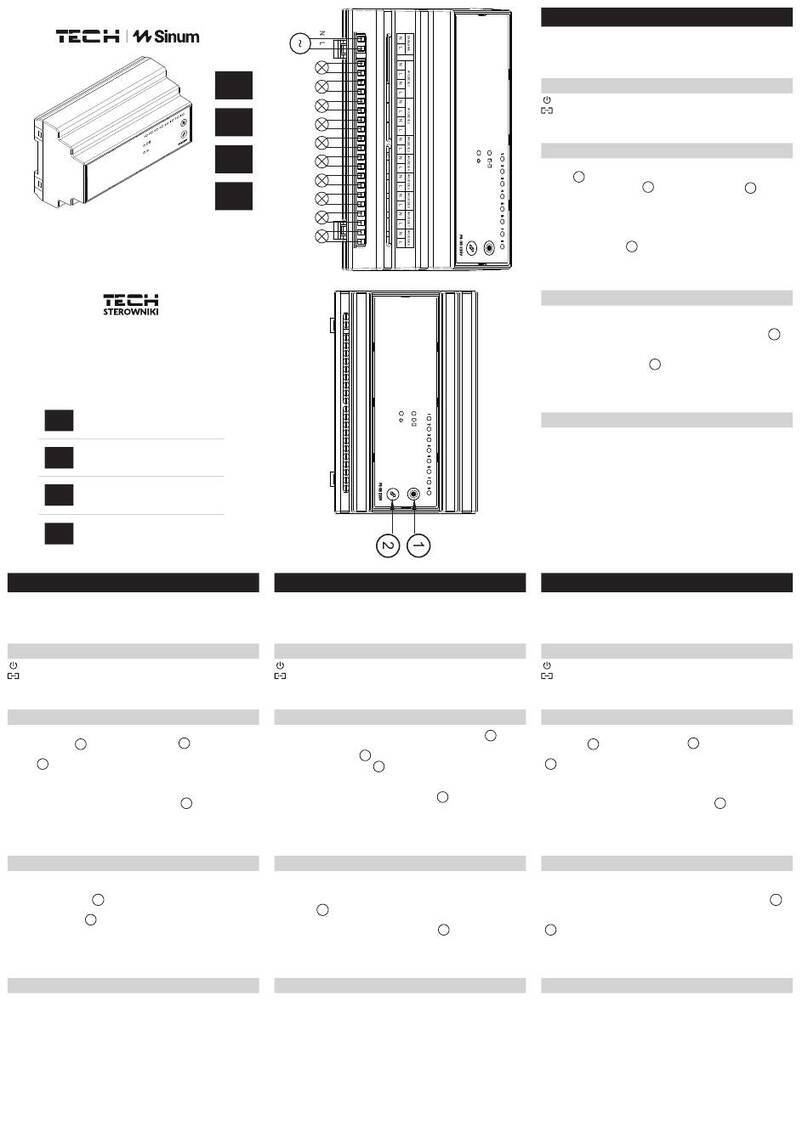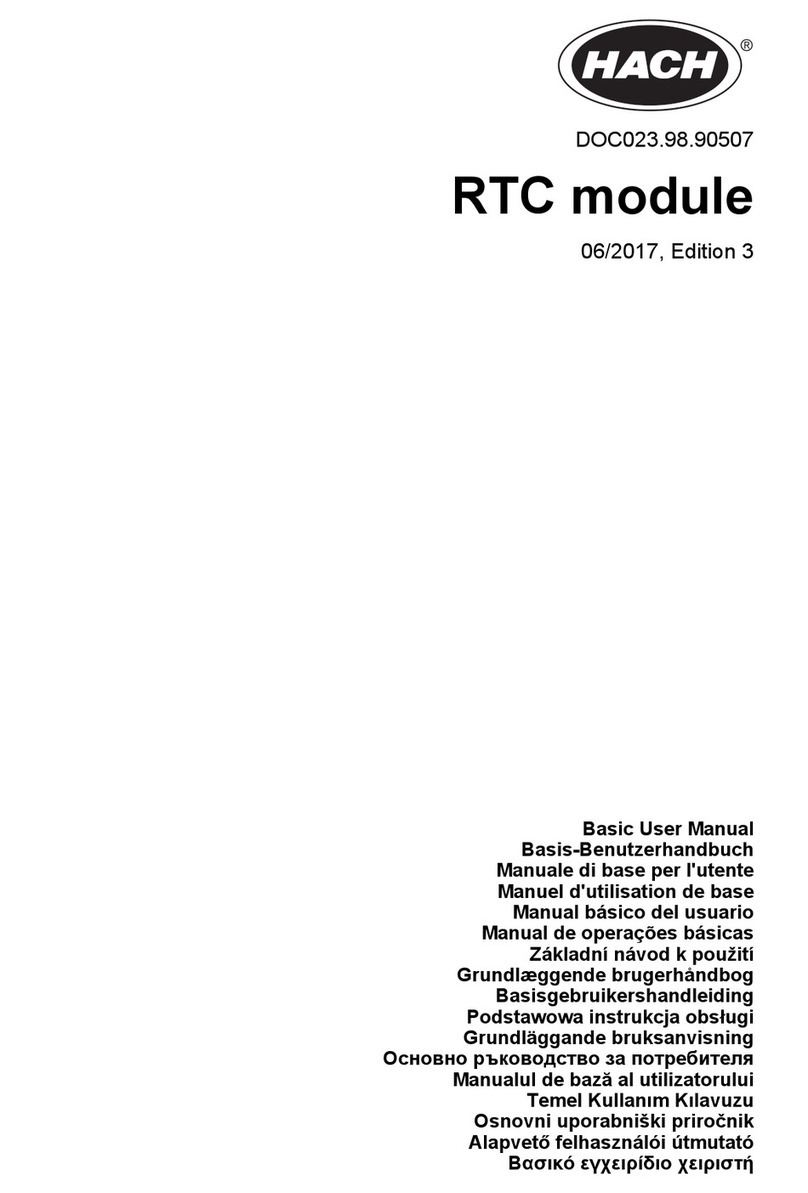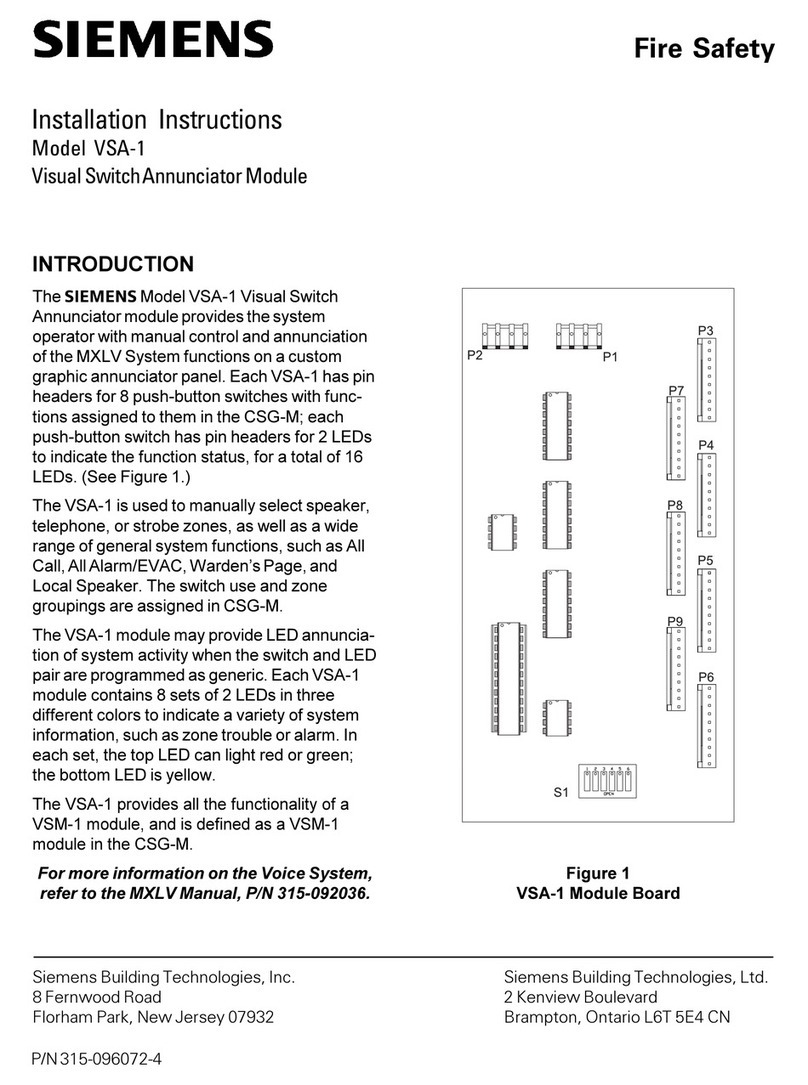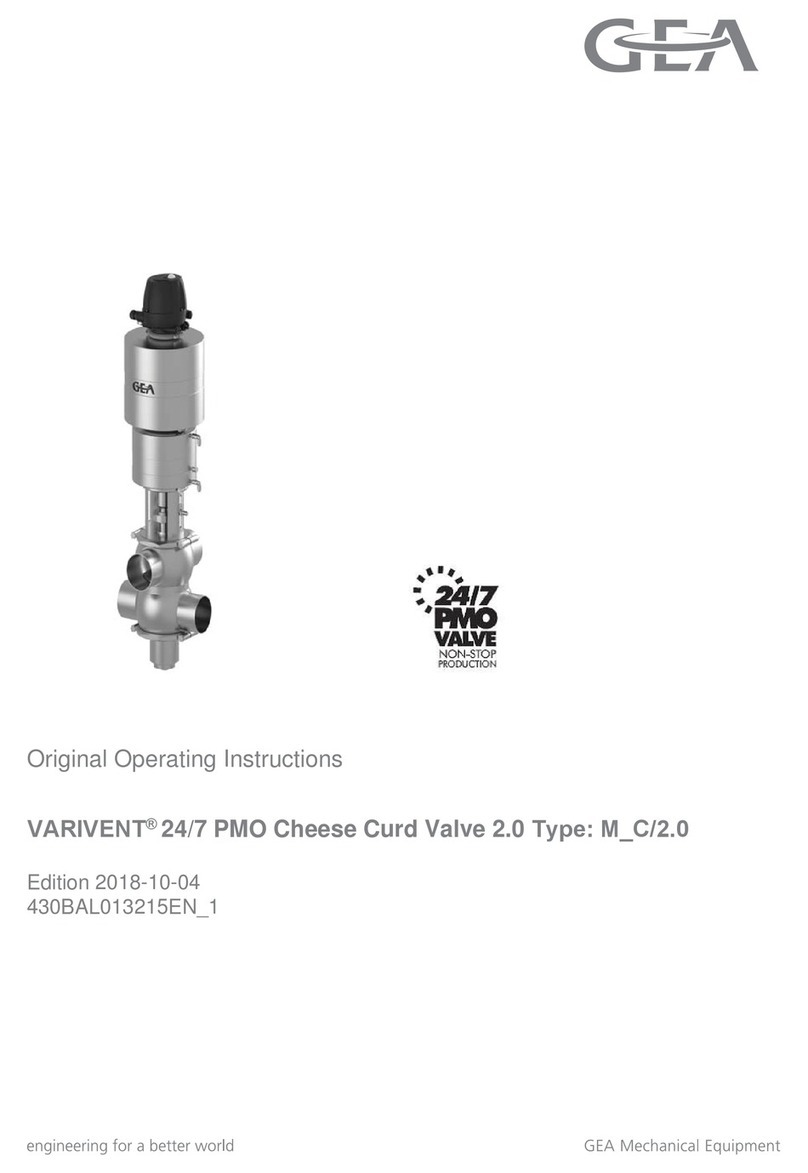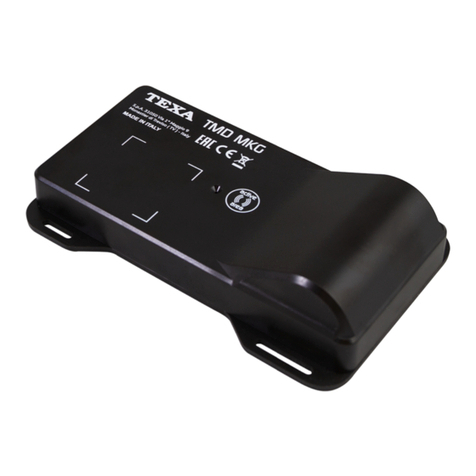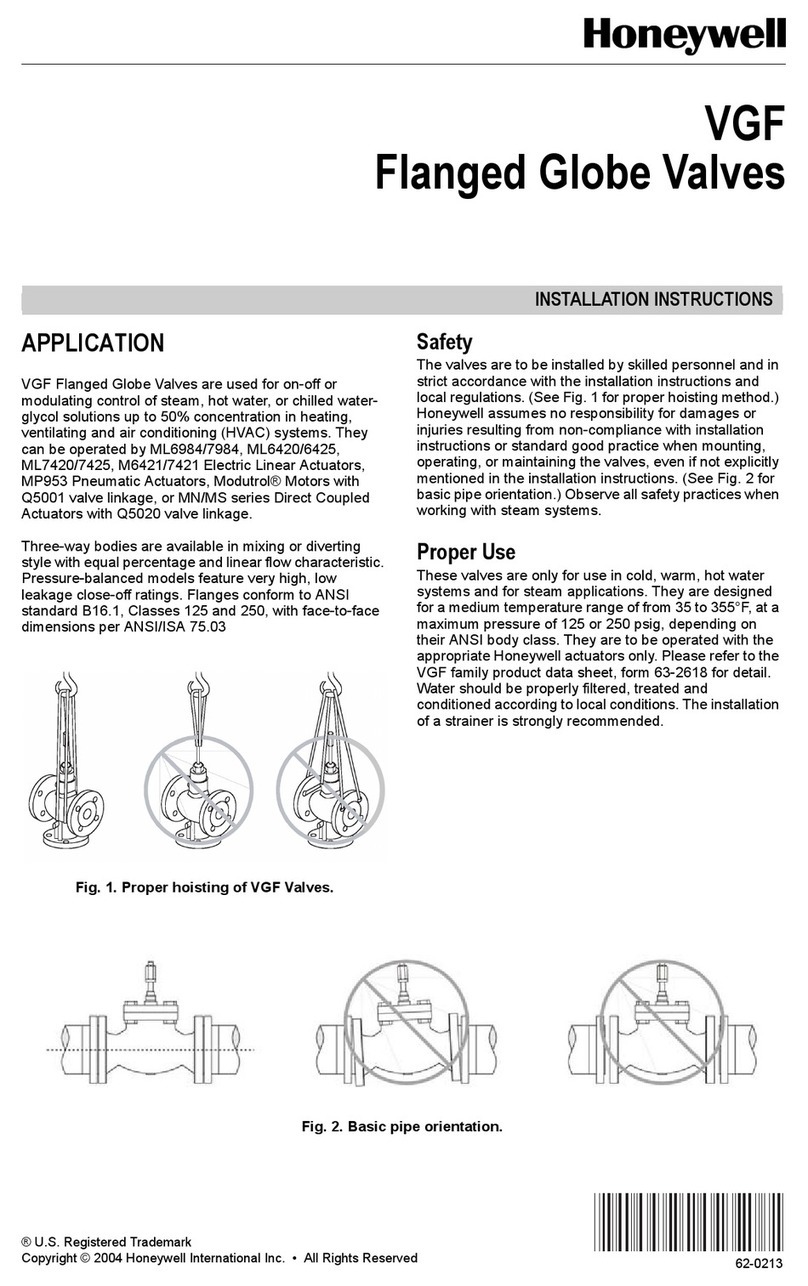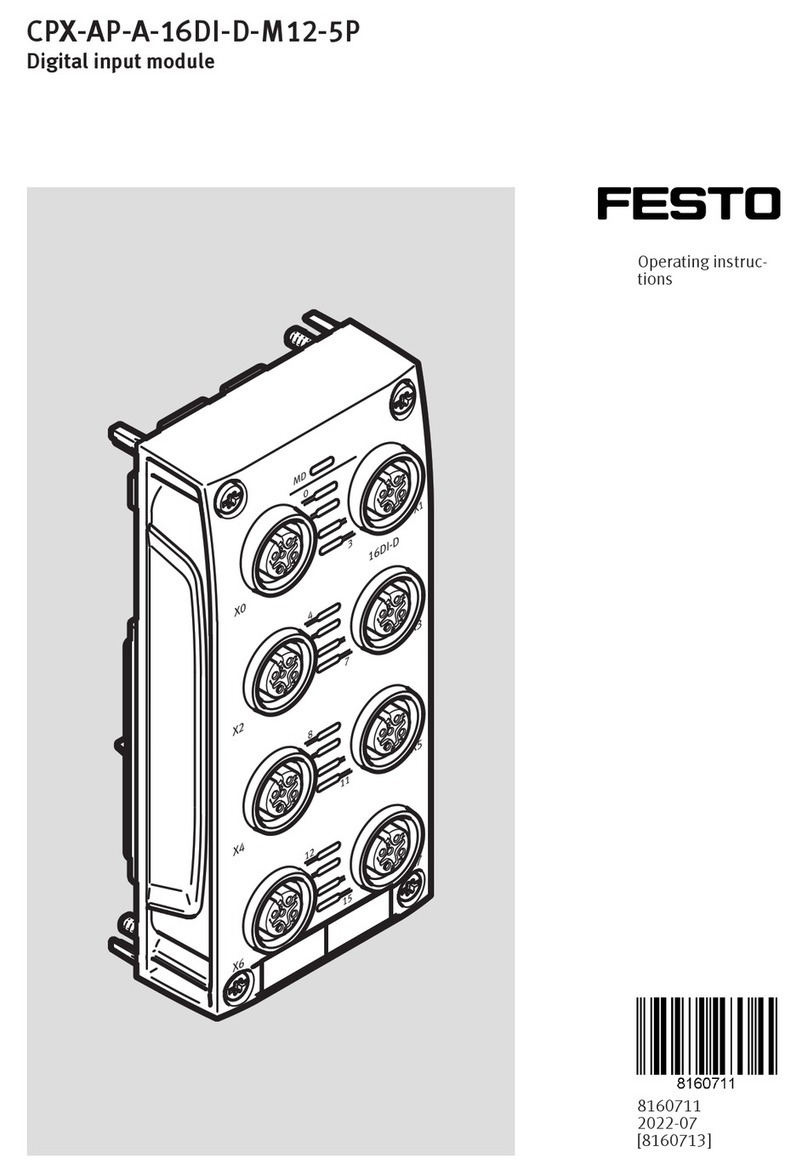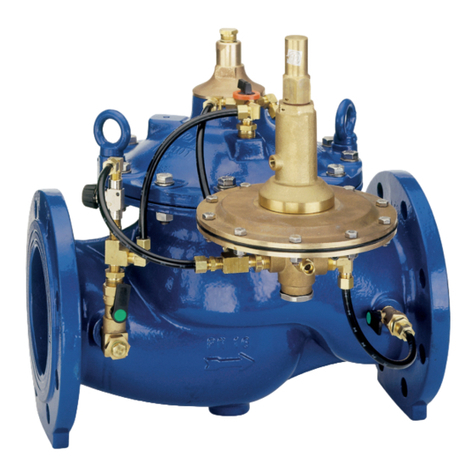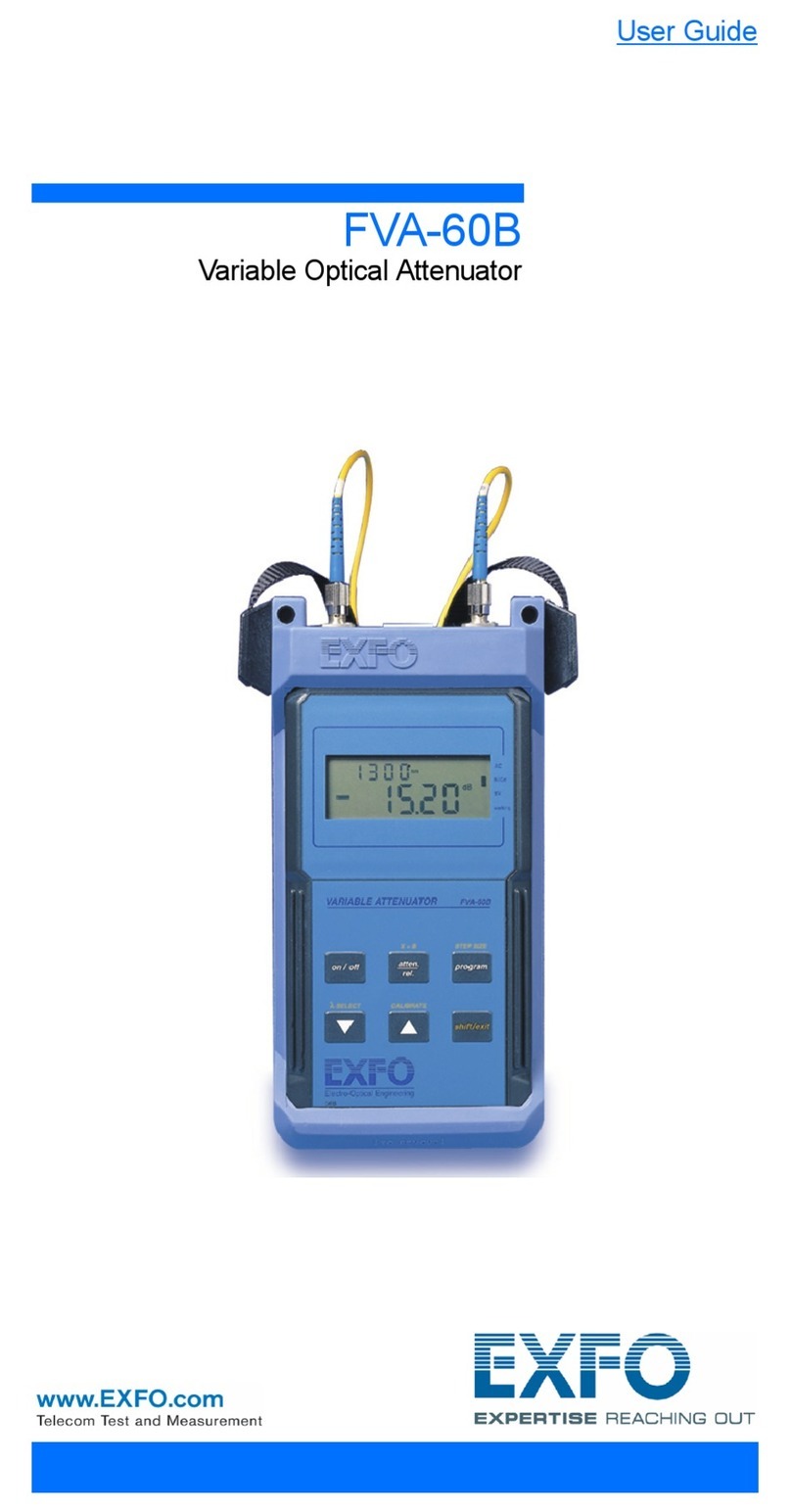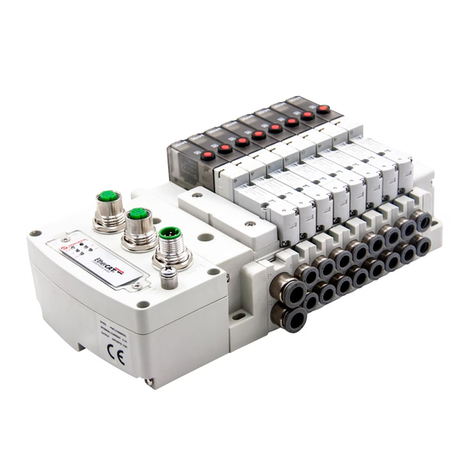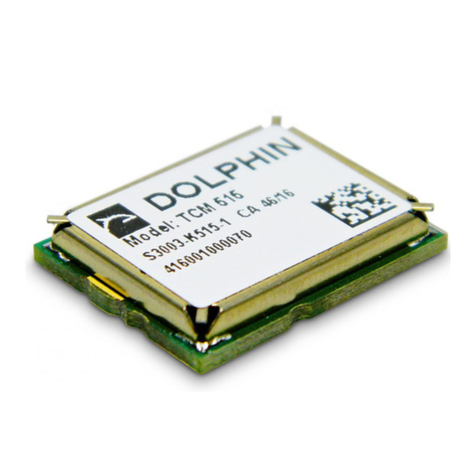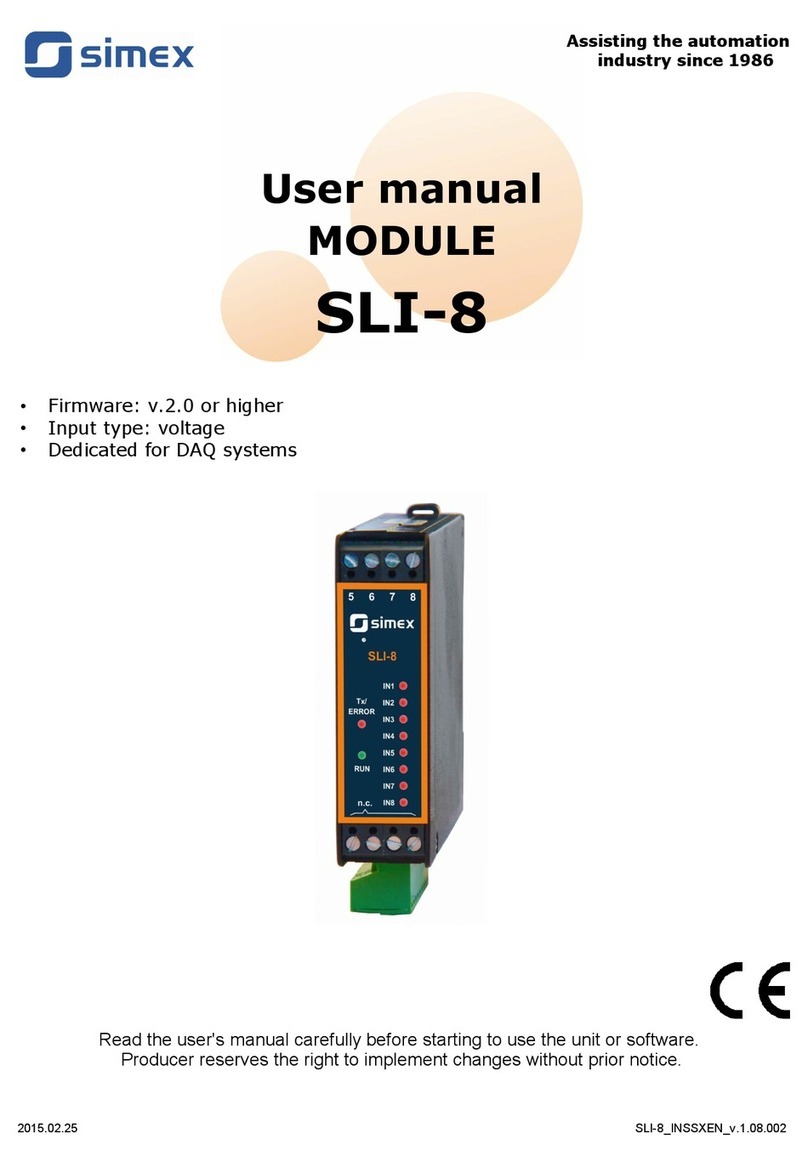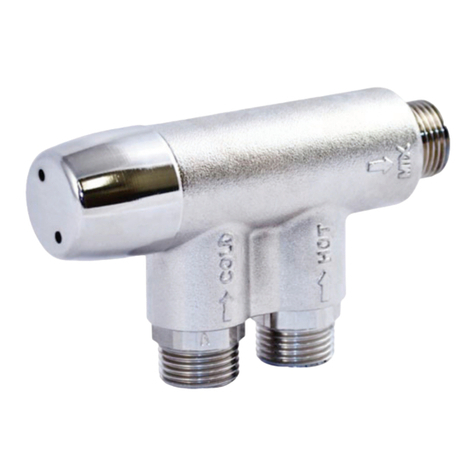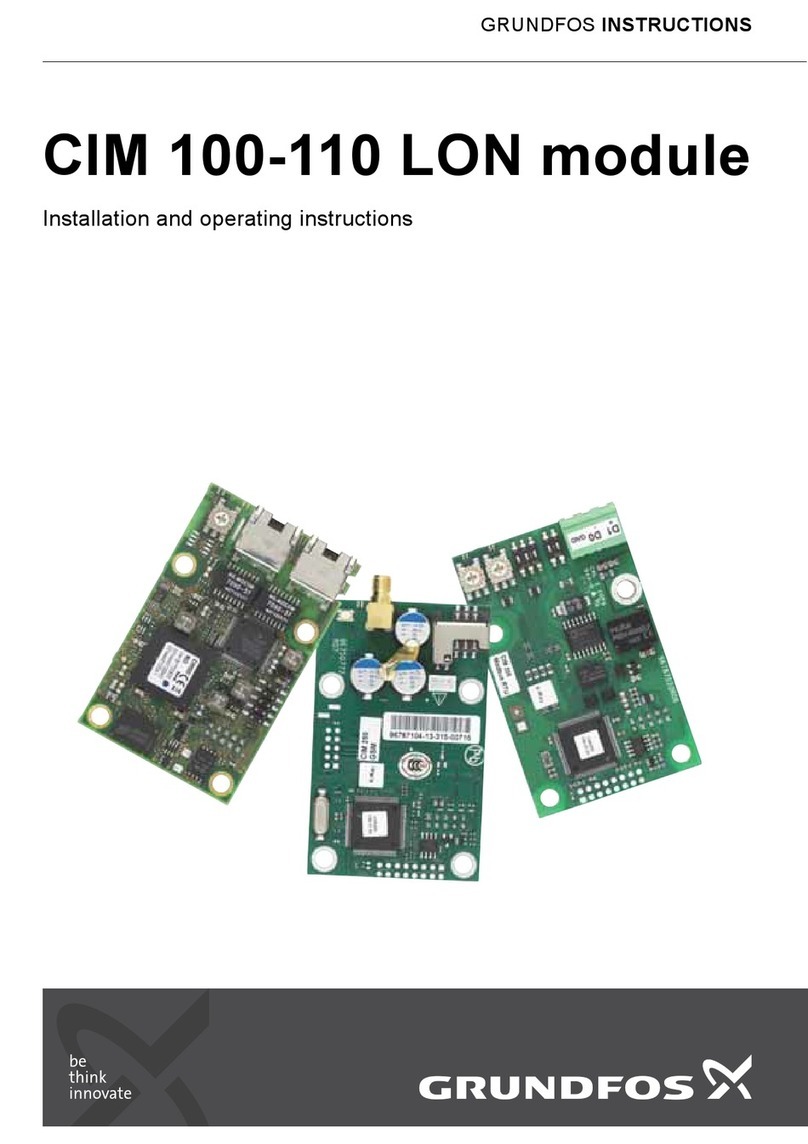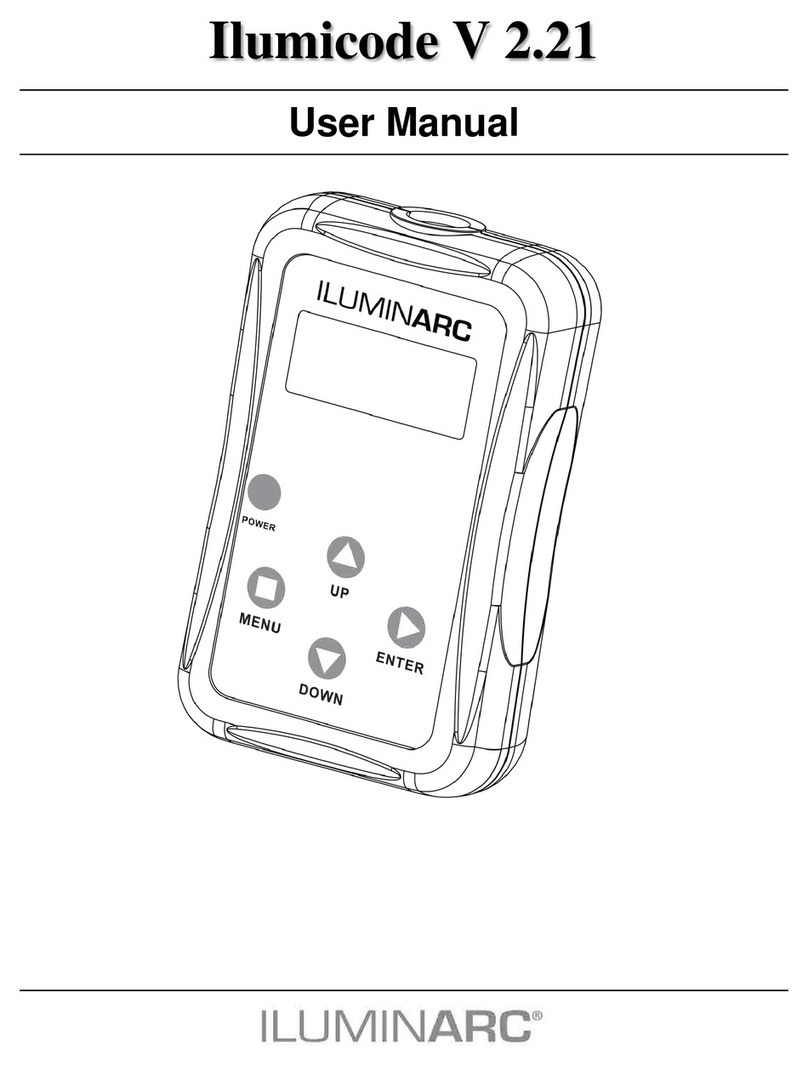Spectrum Controls 1762sc-OF8 User manual

User’s Manual Pub. 0300246-01 Rev. B
1762 8 Channel
Analog Output Module
Catalog Number: 1762sc-OF8

ii MicroLogix™ 1200 8 Ch Output Module
User’s Manual Pub. 0300246-01 Rev. B
Important Notes 1. Please read all the information in this owner’s guide before installing the
product.
2. The information in this owner's guide applies to hardware Series A and firmware
version 1.00 or later.
3. This guide assumes that the reader has a full working knowledge of the relevant
processor.
Notice
The products and services described in this owner's guide are useful in a wide variety of
applications. Therefore, the user and others responsible for applying the products and
services described herein are responsible for determining their acceptability for each
application. While efforts have been made to provide accurate information within this
owner's guide, Spectrum Controls assumes no responsibility for the accuracy,
completeness, or usefulness of the information herein.
Under no circumstances will Spectrum Controls be responsible or liable for any damages
or losses, including indirect or consequential damages or losses, arising out of either the
use of any information within this owner's guide or the use of any product or service
referenced herein.
No patent liability is assumed by Spectrum Controls with respect to the use of any of the
information, products, circuits, programming, or services referenced herein.
The information in this owner's guide is subject to change without notice.
Limited Warranty
Spectrum Controls warrants that its products are free from defects in material and
workmanship under normal use and service, as described in Spectrum Controls literature
covering this product, for a period of 1 year. The obligations of Spectrum Controls under
this warranty are limited to replacing or repairing, at its option, at its factory or facility,
any product which shall, in the applicable period after shipment, be returned to the
Spectrum Controls facility, transportation charges prepaid, and which after examination
is determined, to the satisfaction of Spectrum Controls, to be thus defective.
This warranty shall not apply to any such equipment which shall have been repaired or
altered except by Spectrum Controls or which shall have been subject to misuse, neglect,
or accident. In no case shall the liability of Spectrum Controls exceed the purchase price.
The aforementioned provisions do not extend the original warranty period of any product
which has either been repaired or replaced by Spectrum Controls.

iii
User’s Manual Pub. 0300246-01 Rev. B
Table of Contents
IMPORTANTNOTES............................................................................................................................................II
NOTICE..............................................................................................................................................................II
LIMITEDWARRANTY..........................................................................................................................................II
CHAPTER1MODULEOVERVIEW.....................................................................................................................1‐1
SECTION1.1GENERALDESCRIPTION..............................................................................................................................1‐1
SECTION1.2INPUTTYPESANDRANGES.........................................................................................................................1‐1
SECTION1.3DATAFORMATS.......................................................................................................................................1‐1
SECTION1.4HARDWAREFEATURES..............................................................................................................................1‐2
1.4.1LEDIndicator.............................................................................................................................................1‐2
SECTION1.5SYSTEMOVERVIEW...................................................................................................................................1‐3
1.5.1ModulePower‐up.....................................................................................................................................1‐3
1.5.2ModuleOperation.....................................................................................................................................1‐4
CHAPTER2INSTALLATIONANDWIRING..........................................................................................................2‐1
SECTION2.1COMPLIANCETOEUROPEANUNIONDIRECTIVES.............................................................................................2‐1
2.1.1EMCDirective............................................................................................................................................2‐1
2.1.2LowVoltageDirective...............................................................................................................................2‐1
SECTION2.2POWERREQUIREMENTS............................................................................................................................2‐1
SECTION2.3GENERALCONSIDERATIONS........................................................................................................................2‐2
2.3.1HazardousLocationConsiderations..........................................................................................................2‐2
2.3.2PreventElectrostaticDischarge................................................................................................................2‐3
2.3.3RemovePower..........................................................................................................................................2‐3
2.3.4SelectingaLocation..................................................................................................................................2‐3
SECTION2.4MOUNTING.............................................................................................................................................2‐3
2.4.1MinimumSpacing.....................................................................................................................................2‐4
2.4.2DINRailMounting....................................................................................................................................2‐4
2.4.3PanelMounting........................................................................................................................................2‐5
SECTION2.5SYSTEMASSEMBLY...................................................................................................................................2‐5
SECTION2.6FIELDWIRINGCONNECTIONS......................................................................................................................2‐6
2.6.1WiringDiagram........................................................................................................................................2‐7
2.6.2WiringtheFinger‐SafeTerminalBlock.....................................................................................................2‐9
2.6.3TerminalDoorLabel..................................................................................................................................2‐9
SECTION2.7MODULEINDICATORS..............................................................................................................................2‐10
CHAPTER3CONFIGURINGTHE1762SC‐OF8USINGRSLOGIX500.....................................................................3‐1
SECTION3.1THINGSYOUSHOULDKNOW......................................................................................................................3‐1
SECTION3.2MODULEMEMORYMAP...........................................................................................................................3‐1
SECTION3.3ADDMODULETOLOGIX500......................................................................................................................3‐2
SECTION3.4MODULECONFIGURATION.........................................................................................................................3‐3
3.4.1OutputDataFile(CommandMode).........................................................................................................3‐4
3.4.2OutputDataFile(NormalRunMode).......................................................................................................3‐7
SECTION3.5MODULESTATUS......................................................................................................................................3‐7
3.5.1InputDataFile(CommandMode)............................................................................................................3‐7
3.5.2InputDataFile(NormalRunMode)..........................................................................................................3‐9
SECTION3.6CONFIGURATIONLADDERSAMPLE.............................................................................................................3‐10
APPENDIXAMODULESPECIFICATIONS............................................................................................................A‐1

iv MicroLogix™ 1200 8 Ch Output Module
User’s Manual Pub. 0300246-01 Rev. B
PREFACE
Read this preface to familiarize yourself with the rest of the manual. This preface covers
the following topics:
Who should use this manual
How to use this manual
Related publications
Conventions used in this manual
Rockwell Automation support
Who Should
Use This Manual Use this manual if you are responsible for designing, installing, programming, or
troubleshooting control systems that use Allen-Bradley I/O and/or compatible controllers,
such as MicroLogix 1100 or 1200.
How to Use
This Manual As much as possible, we organized this manual to explain, in a task-by-task manner, how
to install, configure, program, operate and troubleshoot a control system using the
1762sc-OF8.
Related
Documentation The table below provides a listing of publications that contain important information
about Allen-Bradley PLC systems.
Document Title Document Number
MicroLogix™ 1200 User Manual 1762-UM001
MicroLogix™ 1200 Technical Data 1762-TD001
MicroLogix 1200 and MicroLogix 1500 Programmable
Controllers Instruction Set Reference Manual 1762-RM001
Allen-Bradley Programmable Controller Grounding and
Wiring Guidelines 1770-4.1
If you would like a manual, you can:
Download a free electronic version from the internet at
www.theautomationbookstore.com
Purchase a printed manual by:
oContacting your local distributor or Rockwell Automation
representative
oVisiting www.theautomationbookstore.com and placing your order
oCalling 1.800.963.9548 (USA/Canada) or 001.330.725.1574
(Outside USA/Canada)

v
User’s Manual Pub. 0300246-01 Rev. B
Conventions
Used in This
Manual The following conventions are used throughout this manual:
Bulleted lists (like this one) provide information not procedural steps.
Numbered lists provide sequential steps or hierarchical information.
Italic type is used for emphasis
Bold type identifies headings and sub-headings
!
Attention Are used to identify critical information to the reader

vi MicroLogix™ 1200 8 Ch Output Module
User’s Manual Pub. 0300246-01 Rev. B

User’s Manual Pub. 0300246-01 Rev. B
Chapter 1
Module Overview
This chapter describes the 1762sc-OF8 output module. The module provides 8 analog
output channels that can be configured for current or voltage. Included is information
about:
General description
Output types and ranges
Data Formats
Hardware Features
System overview and module operation
Section 1.1
General
Description The output module supports current and voltage type outputs. The module converts the
digital value stored in each channel’s output command word to an analog current or
voltage signal. Each output channel is individually configured via software for a specific
output type, data format, and provides open-circuit or short-circuit detection and
indication.
Section 1.2
Input Types
and Ranges The tables below list the output types and their associated ranges.
Voltage Selection Range (V dc)
-10V to +10V - 11.0 to + 11.0
0 to +5V 0.0 to 5.5
0 to +10V 0.0 to +11.0
1 to +5V 0.0 to +5.5
Current Selection Range (mA)
0 to 20mA 0 to 20.4
4 to 20mA 3.92 to 20.4
Section 1.3
Data Formats For each module the data can be configured for:
Engineering units
Scaled-for-PID
Raw/proportional data
Percent of full range

1-2 MicroLogix™ 1200 IO 8 Ch Output Module
User’s Manual Pub. 0300246-01 Rev. B
Section 1.4
Hardware
Features Module configuration is done via the controller’s programming software. The module
configuration is stored in the memory of the controller. Refer to your controller’s user
manual for more information. The illustration below shows the module’s hardware
features.
Item Description
1a Upper panel mounting tab
1b Lower panel mounting tab
2 Power diagnostic LED
3 Module door with terminal identification label
4 Bus connector (male)
5 Bus connector cover
6 Flat ribbon cable with bus connector (female)
7 Terminal block
8 DIN rail latch
9 Pull loop
1.4.1 LED Indicator
The 1762 output module uses a single green LED to show operational status of the
module. The LED will illuminate solid when the PLC is in run mode and the module
properly configured. If the module is not properly configured, or if the PLC is not in run
mode, the LED will blink rapidly. The following blink codes are the only exception:
Fi
g
ure 1-1

Chapter 1: Module Overview 1-3
User’s Manual Pub. 0300246-01 Rev. B
Table 1-1 (LED Blink Codes)
Blink Code Description
Rapid Blink1PLC not in run mode, or no valid module configuration present
Solid Module is in run mode (Normal Operation)
3 Factory calibration in progress
4 Factory calibration invalid
5 Module is in command mode
Section 1.5
System
Overview The module communicates to the controller through the bus interface. The module also
receives 5 and 24V dc power through the bus interface.
1.5.1 Module Power-up
At power-up, the module performs a check of its internal circuits, memory, and basic
functions. During this time, the module status LED remains off. If no faults are found
during power-up diagnostics, the module status LED blinks rapidly waiting for command
mode.
After power-up checks are complete, the module waits for command mode and then valid
channel configuration data. If an invalid configuration is detected, the module generates
a configuration error and remains in command mode. Once the module is properly
configured and enabled, it continuously converts the output command value to a
proportional analog output signal.
Each time a channel command value is read by the output module, that data value is
tested by the module for an over-range or under-range condition. If such a condition is
detected, a unique bit is set in the channel status word. The channel status word is
described in section 3.5.2 Input Data File.
Using the module image table, the controller reads the two’s complement binary
converted input data from the module. This typically occurs at the end of the program
scan or when commanded by the control program. If the controller and the module
determine that the data transfer has been made without error, the data is used in the
control program.
1All outputs are disabled until the PLC goes into run mode and the module receives a valid configuration.

1-4 MicroLogix™ 1200 IO 8 Ch Output Module
User’s Manual Pub. 0300246-01 Rev. B
1.5.2 Module Operation
When the module receives a new command value from the output image, the module’s
circuitry converts the digital value to an analog current/voltage signal using a DAC
(Digital to Analog Converter). See the block diagram below.

User’s Manual Pub. 0300246-01 Rev. B
Chapter 2
Installation and Wiring
This chapter will cover:
Compliance to European union directives
Power requirements
General considerations
Mounting
Field wiring connections
Module Indicators
Section 2.1
Compliance to
European
Union Directives This product is approved for installation within the European Union and EEA regions. It
has been designed and tested to meet the following directives.
2.1.1 EMC Directive
The 1762sc-OF8 module is tested to meet Council Directive 89/336/EEC
Electromagnetic Compatibility (EMC) and the following standards, in whole or in part,
documented in a technical construction file:
IEC 61000-6-4 Electromagnetic compatibility (EMC) - Part 6-4: Generic
standards - Emission standard for industrial environments
IEC 61000-6-2 Electromagnetic compatibility (EMC) – Part 6-2: Generic
standards – Immunity for industrial environments
This product is intended for use in an industrial environment.
2.1.2 Low Voltage Directive
This product is tested to meet Council Directive 73/23/EEC Low Voltage, by applying
the safety requirements of EN 61131-2Programmable Controllers, Part 2 – Equipment
Requirements and Tests. For specific information required by EN61131-2, see the
appropriate sections in this publication, as well as the following Allen-Bradley
publications:
Industrial Automation, Wiring and Grounding Guidelines for Noise Immunity,
publication 1770-4.1
Automation Systems Catalog, publication B113
Section 2.2
Power
Requirements The module receives power through the bus interface from the +5V dc/+24V dc system
power supply. The maximum current drawn by the module is shown in the table below.

2-2 MicroLogix™ 1200 IO 8 Ch Output Module
User’s Manual Pub. 0300246-01 Rev. B
5 VDC 24 VDC
30 mA 250 mA @ 18.7V, 195mA @ 24V
Use the table below to determine the maximum number of OF8 modules that can be
installed in a MicroLogix system.
Table 2-1
Controller Max 5V
Bus Current (mA) Max 24V
Bus Current (mA) Max # of OF8 Modules
ML1100 800 700 3
ML1200 (24pt.) 400 350 1
ML1200 (40pt.) 600 500 2
ML1400 (ALL) 1500 1500 6
Section 2.3
General
Considerations 1762 I/O is suitable for use in an industrial environment when installed in accordance
with these instructions. Specifically, this equipment is intended for use in clean, dry
environments Pollution degree 22and to circuits not exceeding Over Voltage Category
II3(IEC 60664-1)4.
2.3.1 Hazardous Location Considerations
This equipment is suitable for use in Class I, Division 2, Groups A, B, C, D or non-
hazardous locations only. The following WARNING statement applies to use in
hazardous locations.
!
Attention
EXPLOSION HAZARD
Substitution of components may impair suitability for Class I,
Division 2.
Do not replace components or disconnect equipment unless
power has been switched off or the area is known to be non-
hazardous.
Do not connect or disconnect components unless power has
been switched off or the area is known to be non-hazardous.
This product must be installed in an enclosure.
All wiring must comply with N.E.C. article 501-4(b).
2Pollution Degree 2 is an environment where, normally, only non-conductive pollution occurs except that
occasionally a temporary conductivity caused by condensation shall be expected.
3Over Voltage Category II is the load level section of the electrical distribution system. At this level
transient voltages are controlled and do not exceed the impulse voltage capability of the product’s
insulation.
4Pollution Degree 2 and Over Voltage Category II are International Electrotechnical Commission (IEC)
designations.

Chapter 2: Installation and Wiring 2-3
User’s Manual Pub. 0300246-01 Rev. B
2.3.2 Prevent Electrostatic Discharge
!
Attention
Electrostatic discharge can damage integrated circuits or
semiconductors if you touch analog I/O module bus connector pins or
the terminal block on the input module. Follow these guidelines when
you handle the module:
Touch a grounded object to discharge static potential.
Wear an approved wrist-strap grounding device.
Do not touch the bus connector or connector pins.
Do not touch circuit components inside the module.
If available, use a static-safe work station.
When it is not in use, keep the module in its static-shield bag.
2.3.3 Remove Power
!
Attention
Remove power before removing or inserting this module. When you
remove or insert a module with power applied, an electrical arc may
occur. An electrical arc can cause personal injury or property damage
by:
Sending an erroneous signal to your system’s field devices,
causing unintended machine motion
Causing an explosion in a hazardous environment
Electrical arcing causes excessive wear to contacts on both the module
and its mating connector and may lead to premature failure.
2.3.4 Selecting a Location
Reducing Noise
Most applications require installation in an industrial enclosure to reduce the effects of
electrical interference. Analog inputs are highly susceptible to electrical noise. Electrical
noise coupled to the analog inputs will reduce the performance (accuracy) of the module.
Group your modules to minimize adverse effects from radiated electrical noise and heat.
Consider the following conditions when selecting a location for the analog module.
Position the module:
Away from sources of electrical noise such as hard-contact switches, relays, and
AC motor drives
Away from modules which generate significant radiated heat. Refer to the
module’s heat dissipation specification.
In addition, route shielded, twisted-pair analog input wiring away from any high voltage
I/O wiring.
Section 2.4
Mounting
!
Attention
Do not remove protective debris strip until after the module and all
other equipment near the module is mounted and wiring is complete.
Once wiring is complete and the module is free of debris, carefully
remove protective debris strip. Failure to remove strip before operating
can cause overheating.

2-4 MicroLogix™ 1200 IO 8 Ch Output Module
User’s Manual Pub. 0300246-01 Rev. B
2.4.1 Minimum Spacing
Maintain spacing from enclosure walls, wireways, adjacent equipment, etc. Allow 50.8
mm (2 in.) of space on all sides for adequate ventilation, as shown:
Figure 2-1
Note: 1762 expansion I/O may be mounted horizontally only.
!
Attention
During panel or DIN rail mounting of all devices, be sure that all debris
(metal chips, wire strands, etc.) is kept from falling into the module.
Debris that falls into the module could cause damage when power is
applied to the module.
2.4.2 DIN Rail Mounting
The module can be mounted using the following DIN rails: 35 x 7.5 mm (EN 50 022 - 35
x 7.5) or 35 x 15 mm (EN 50 022 - 35 x 15).
Before mounting the module on a DIN rail, close the DIN rail latch. Press the DIN rail
mounting area of the module against the DIN rail. The latch will momentarily open and
lock into place.
Use DIN rail end anchors (Allen-Bradley part number 1492-EA35 or 1492-EAH35) for
environments with vibration or shock concerns.

Chapter 2: Installation and Wiring 2-5
User’s Manual Pub. 0300246-01 Rev. B
Figure 2-2
Note: For environments with extreme vibration and shock concerns, use
the panel mounting method described below, instead of DIN rail mounting.
2.4.3 Panel Mounting
Use the dimensional template shown below to mount the module. The preferred
mounting method is to use two M4 or #8 Pan Head screws per module. M3.5 or #6 Pan
Head screws may also be used, but a washer may be needed to ensure a good ground
contact. Mounting screws are required on every module.
Figure 2-3
Section 2.5
System
Assembly The expansion I/O module is attached to the controller or another I/O module by means
of a ribbon cable after mounting as shown below.

2-6 MicroLogix™ 1200 IO 8 Ch Output Module
User’s Manual Pub. 0300246-01 Rev. B
Figure 2-4
Note: Use the pull loop on the connector to disconnect modules. Do not
pull on the ribbon cable.
!
Attention
EXPLOSION HAZARD
In Class I, Division 2 applications, the bus connector must be
fully seated and the bus connector cover must be snapped in
place.
In Class I, Division 2 applications, all modules must be
mounted in direct contact with each other as shown on page 2-
4. If DIN rail mounting is used, an end stop must be installed
ahead of the controller and after the last 1762 I/O module.
Section 2.6
Field Wiring
Connections Consider the following when wiring your system:
General
Power and output wiring must be in accordance with Class 1, Division 2 wiring
methods, Article 501-4(b) of the National Electric Code, NFPA 70, and in
accordance with the authority having jurisdiction.
The analog common (COM) is not connected to earth ground inside the module.
All terminals are electrically isolated from the system.
To ensure optimum accuracy for voltage type outputs, limit overall cable
impedance by keeping all analog cables as short as possible. Locate the I/O
system as close to your voltage type sensors or actuators as possible.
Digital and analog power must be supplied by an Isolated Secondary Limited
Energy Low Voltage source.
Use Belden™ 8761, or equivalent, shielded wire.

Chapter 2: Installation and Wiring 2-7
User’s Manual Pub. 0300246-01 Rev. B
!
Attention
USE SUPPLY WIRES SUITALE FOR 20°C ABOVE SURROUNDING
AMBIENT
!
Attention
UTILISER DES FILS D’ALIMENTATION QUI CONVIENNENT A
UNE TEMPERATURE DE 20°C AU-DESSUS DE LA
TEMPERATURE AMBIANTE
Grounding
This product is intended to be mounted to a well-grounded mounting surface
such as a metal panel. Additional grounding connections from the module’s
mounting tabs or DIN rail (if used) are not required unless the mounting surface
cannot be grounded.
Under normal conditions, the drain wire (shield) should be connected to the
metal mounting panel (earth ground). Keep shield connection to earth ground as
short as possible.
Ground the shield drain wire at one end only. The typical location is as at the
module end.
If it is necessary to connect the shield drain wire at the module end, connect it to
earth ground using a panel or DIN rail mounting screw.
Refer to Industrial Automation Wiring and Grounding Guidelines, Allen-
Bradley publication 1770-4.1, for additional information.
Noise Prevention
Route field wiring away from any other wiring and as far as possible from
sources of electrical noise, such as motors, transformers, contactors, and ac
devices. As a general rule, allow at least 15.2 cm (6 in.) of separation for every
120V of power.
Routing field wiring in a grounded conduit can reduce electrical noise.
If field wiring must cross ac or power cables, ensure that they cross at right
angles.
If noise persists for a device, try grounding the opposite end of the cable shield
or ground both ends of the shield.
2.6.1 Wiring Diagram
Refer to the following wiring diagrams for field wiring connections.
Figure 2-5 (Wiring Diagram)

2-8 MicroLogix™ 1200 IO 8 Ch Output Module
User’s Manual Pub. 0300246-01 Rev. B
Note: All return terminals are electrically tied together, but each output
should use its own associated return terminal for best accuracy.
OUT 0
Shield
OUT 2
OUT 3
OUT 4
OUT 5
OUT 6
OUT 7
RTN 0
RTN 1
RTN 2
RTN 3
RTN 4
RTN 5
RTN 7
NC
NC
RTN 6
+
-
OUT 1
Load

Chapter 2: Installation and Wiring 2-9
User’s Manual Pub. 0300246-01 Rev. B
2.6.2 Wiring the Finger-Safe Terminal Block
Figure 2-6
!
Attention
Be careful when stripping wires. Wire fragments that fall into a module
could cause damage when power is applied. Once wiring is complete,
ensure the module is free of all metal fragments.
When wiring the terminal block, keep the finger-safe cover in place.
1) Refer to section 2.6.1for proper field wiring connections.
2) Route the wire under the terminal pressure plate. You can use the stripped end
of the wire or a spade lug. The terminals will accept a 6.35 mm (0.25 in.) spade
lug. See Figure 2-6.
3) Tighten the terminal screw making sure the pressure plate secures the wire.
Recommended torque when tightening terminal screws is 0.904 Nm (8 in-lbs).
4) After wiring is complete, remove the debris shield.
2.6.3 Terminal Door Label
A removable, write-on label is provided with the module. Remove the label from the
door, mark your unique identification of each terminal with permanent ink, and slide the
label back into the door. Your markings (ID tag) will be visible when the module door is
closed. See figure below.

2-10 MicroLogix™ 1200 IO 8 Ch Output Module
User’s Manual Pub. 0300246-01 Rev. B
Figure 2-7 (Door Label)
Section 2.7
Module Indicators The 1762 output module uses a single green LED to show operational status of the
module. The LED will illuminate solid when the PLC is in run mode and the module
properly configured. If the module is not properly configured, or if the PLC is not in run
mode, the LED will blink rapidly. The following blink codes are the only exception:
Table 2-2 (LED Blink Codes)
Blink Code Description
Rapid Blink5PLC not in run mode, or no valid module configuration present
Solid Module is in run mode (Normal Operation)
3 Factory calibration in progress
4 Factory calibration invalid
5 Module is in command mode
5All outputs are disabled until the PLC goes into run mode and the module receives a valid configuration.
Table of contents
Other Spectrum Controls Control Unit manuals

Spectrum Controls
Spectrum Controls DTAM PLUS 2707-L40 Series User manual
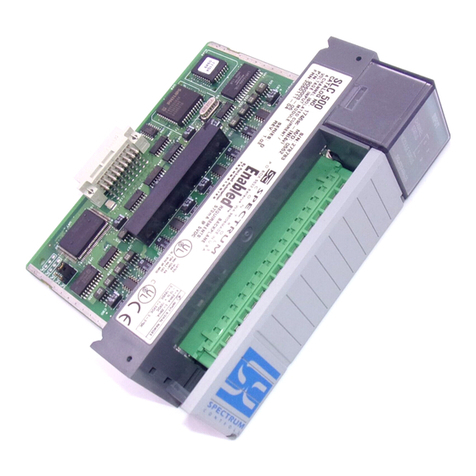
Spectrum Controls
Spectrum Controls SLC 500 User manual
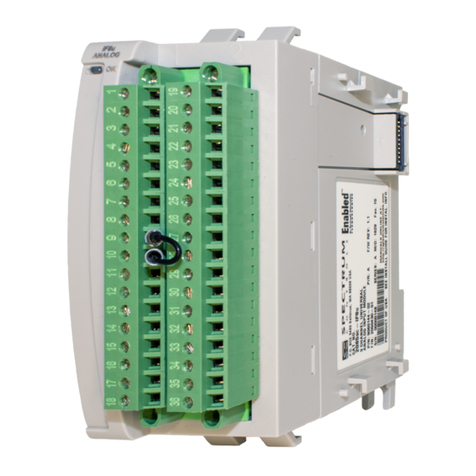
Spectrum Controls
Spectrum Controls 2085sc-IF8U User manual
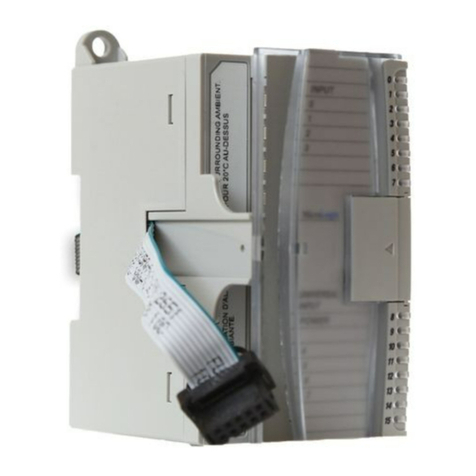
Spectrum Controls
Spectrum Controls 1762sc-IF4OF4 User manual
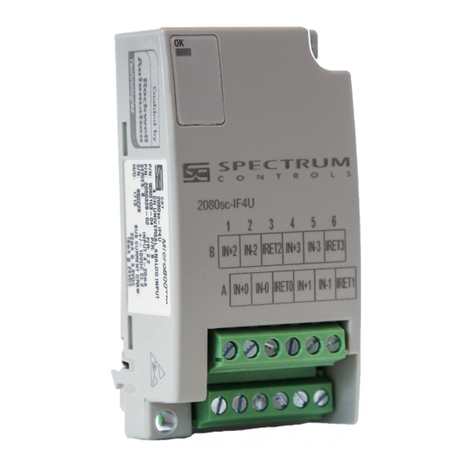
Spectrum Controls
Spectrum Controls Micro800 2080sc-IF4U User manual
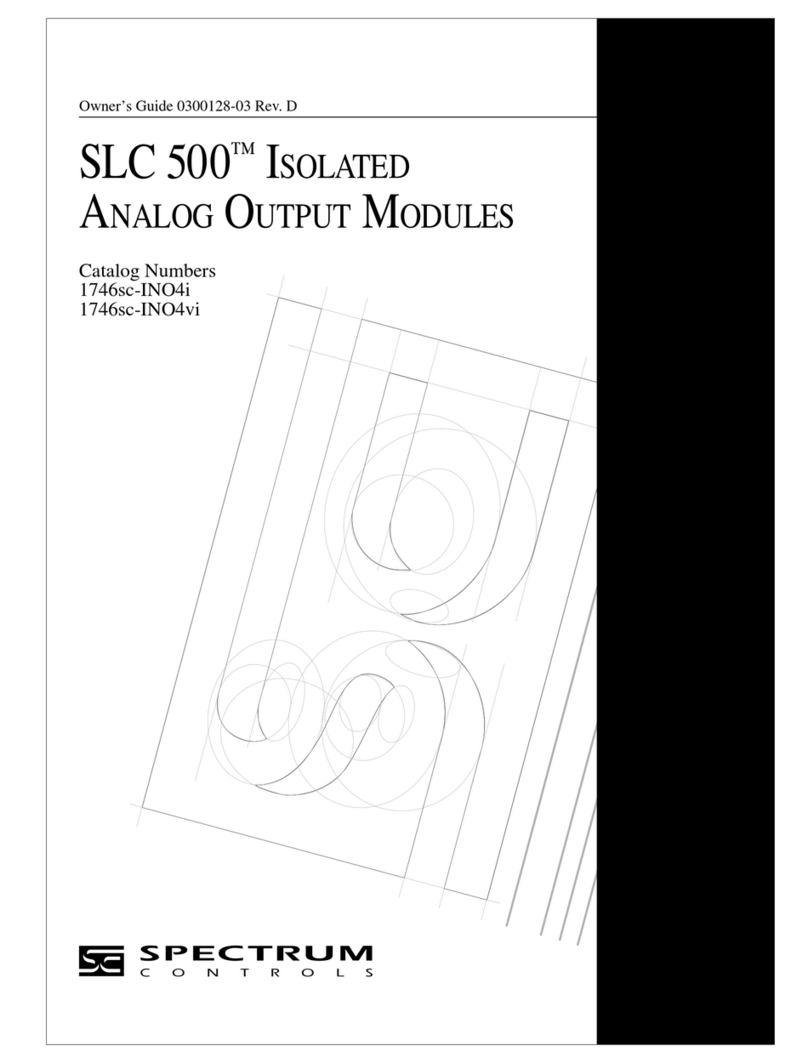
Spectrum Controls
Spectrum Controls SLC 500 1746sc-INO4i User manual
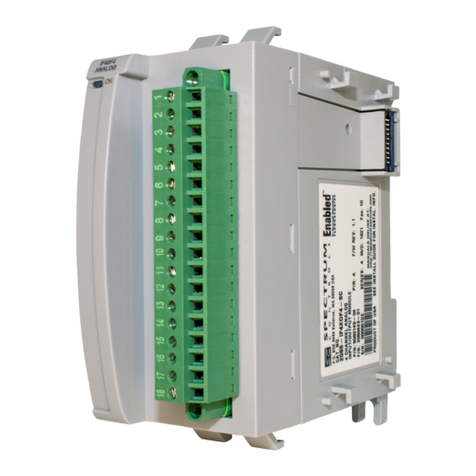
Spectrum Controls
Spectrum Controls Micro800 2085-IR8-SC User manual
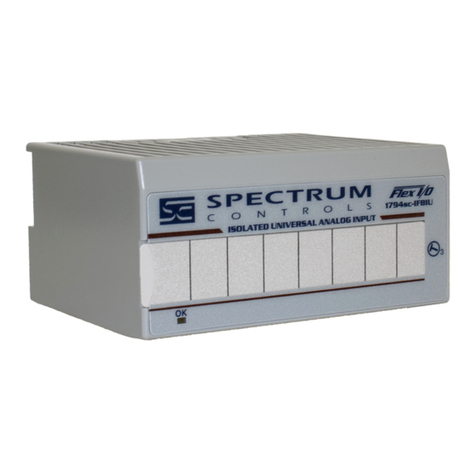
Spectrum Controls
Spectrum Controls 1794 User manual

Spectrum Controls
Spectrum Controls SLC 500 User manual
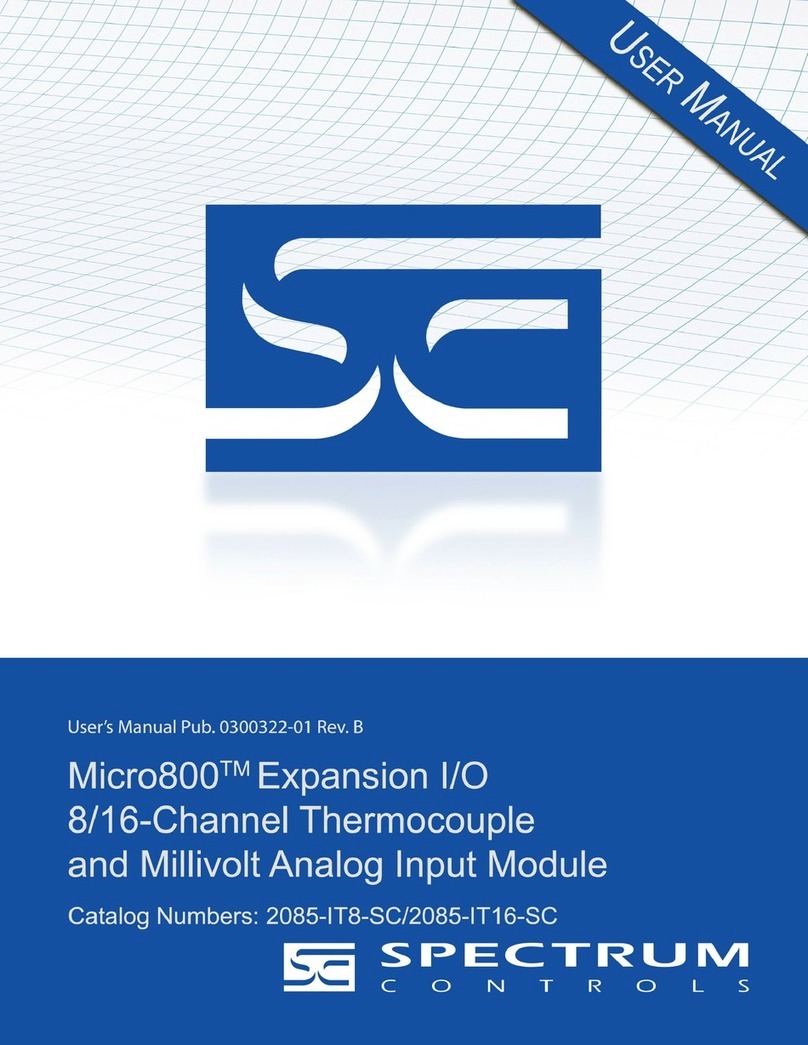
Spectrum Controls
Spectrum Controls Micro800 2085-IF16C-SC User manual
